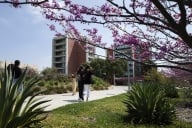You have /5 articles left.
Sign up for a free account or log in.

Istockphoto.com/PATCHARIN SAENLAKON
During the recent debates around rewriting federal rules on higher education innovation, officials from the U.S. Department of Education raised the possibility of revising the definition of an instructor to include “instructional teams.” While some experts involved in the discussions endorsed the proposal, others fretted that it could allow nefarious institutions to receive federal aid while hiring groups of unqualified people to lead courses.
The resulting proposal softened the department’s original intention, allowing that distance education courses eligible for federal aid can be taught by “an instructor or instructors” who are "responsible for delivering course content." Under the proposed new rules, institutional accreditors will have the authority to define more specifically an instructor’s qualifications. Advocates of new forms of teaching and learning largely welcomed these changes, which protect institutions experimenting with new classifications of faculty roles.
This debate underscored a subplot in the ongoing transformation of educational experiences offered by colleges and universities. The “unbundled faculty” model, in which teams of people with varied qualifications and backgrounds collaboratively develop and administer courses, has become close to synonymous with competency-based programs, which allow students to proceed through courses and achieve learning outcomes at their own pace. Some observers also believe that greater differentiation among faculty roles throughout academe could allow faculty members to play to their strengths: high-quality teachers get to teach, high-quality researchers focus on research, students get more attention from a set of people focused on helping them meet educational goals.
As with most new ideas in higher education, dramatic or otherwise, the industry as a whole has been slow to embrace this new approach. Many institutions have shied away from investing fully in competency-based programs due to ambiguities in the current regulations around interactions between faculty members and students. Western Governors University was notoriously cited for allegedly running afoul of those rules, though it ultimately suffered no penalties.
Even so, unbundled faculty models at several prominent institutions represent early efforts to rethink students’ relationship to the people shepherding them through their higher education pursuits. These teams differ in size and shape, and some are more established than others, as institutions with more traditional cultures struggle to assimilate to new paradigms. Models that challenge tradition will be scrutinized as the status quo for online education continues to evolve rapidly.
Origins
Western Governors University, with more than 110,000 students currently enrolled, has recently become the nation’s highest-enrolled institution of higher learning. It’s also the most prominent purveyor of the unbundled faculty model.
The university describes its model as having four prongs:
- Curriculum and assessment faculty, all full-time employees, who design and develop the curriculum and individual courses.
- Program mentors, all full-time employees, who meet weekly or biweekly with students to help them navigate their entire academic programs.
- Course instructors, all full-time employees with Ph.D.s or master's degrees, who focus on particular courses and help students achieve individual core competencies.
- Evaluators, full- and part-time employees, who assess student work upon completion.
Bob Collins, WGU’s vice president of financial aid, has been a consultant for the institution since before it enrolled its first student in 1997. He sees the unbundled faculty model as “a critical factor in our students’ success for completion and graduation.” Rather than feeling burdened by pressure to teach to the test, instructors focus on leading students to specific and discrete objectives.
Natalie Murray, vice president of student experience, believes many traditional faculty members might welcome the opportunity to specialize in just one of WGU’s four distinct areas -- some are more interested in providing feedback on student work, while others like to think about how courses connect to each other.
New students, many of whom likely won’t have experienced education delivered in this format before enrolling at WGU, get exposed to the complexities of the model before admission and during an extensive onboarding course, Murray said. Academic centers, including hubs for writing, math and general student success, also offer students additional guidance throughout their WGU experience.
All WGU faculty members, meanwhile, go through weekly training sessions that cover pedagogy, strategies for engaging students and techniques for using new technology tools.
To skeptics of the model, Collins offers that it’s not as radical as it may seem. “The professor and the TA: that’s an instructional team,” he said.
Alternatives
Unbundled faculty teams aren’t all the same. The University of Wisconsin Extension, an arm of the state system that partners with member campuses on traditional and competency-based online programs, takes a bifurcated approach, with academic success coaches providing wraparound services to students and instructors overseeing individual courses.
Early discussions in 2012 and 2013 about establishing Extension raised the possibility of simply adding a franchise of WGU to the state. But Aaron Brower, the system’s senior associate vice president of academic affairs and executive director of the Extended Campus, fought for an independent entity that works to enhance the existing brand.
Nonetheless, this model cribs some elements from WGU. Coaches proactively contact students weekly or biweekly to check in and serve many functions of a traditional academic adviser, as well as offering support on financial aid questions and other issues that come up. When students have questions about the content of their courses, coaches connect them to faculty members with expertise, who also provide formative and summative feedback throughout.
Each coach works with an average of 110 students at a time. Most at the senior level receive annual salaries of between $50,000 and $60,000. Many have master’s degrees, and most come from an academic advising or student success background.
CBE programs at the Extension branch have graduated more than 400 students, and the retention rate currently sits at 80 percent.
Brower emphasizes the “student-centered” nature of the model, which emphasizes projects over traditional assignments and exams. Learners set a monthly plan for the competencies they hope to accomplish; success coaches assist throughout with timing and progress reports.
“It’s not just, you throw a bunch of materials at students and they just do what they can,” Brower said. “It’s very structured so that students have to demonstrate progress and they are urged on both through the feedback that the faculty provide and through the faculty oversight of the academic success coach that works with the students as well.”
The model is designed to become more sophisticated over time. Coaches draw on prior experience with students to anticipate at which points learners might encounter issues or need more help, according to Laura Pedrick, special assistant to the University of Wisconsin at Milwaukee’s provost for strategic initiatives and executive director of the University of Wisconsin Milwaukee Online.
The workload for faulty members turned out to be higher than administrators anticipated at the outset, according to Pedrick. The institution now offers stipends to instructors teaching more than a certain number of students at a time, among other fixes.
Like Collins, Brower sees the faculty-TA relationship as a potent analogy for what this seemingly innovative model is founded upon.
"If you want to think about the history of higher education, there didn’t used to be anyone other than faculty, who did all the work that has been allocated to student affairs staff: living in residence halls; doing admissions, registrar and other student academic affairs work; all advising and career counseling, etc.," Brower said. "In that sense, faculty roles have evolved and been 'unbundling' for at least a century."
Figuring Things Out
While Wisconsin has seen strong returns from its foray into an unbundled model, other institutions have waded in more cautiously. North Carolina’s Legislature a few years ago urged the University of North Carolina system toward offering CBE programs, but many faculty members within the system continue to harbor reservations about teaching differently, according to Michelle Soler, the system’s director of competency-based education and assessment.
A “small pilot” of a competency-based R.N.-to-B.S.N. program is underway at Winston-Salem State University, according to Soler. As at WGU, this program’s courses are led by one faculty member handling content and another faculty member handling assessment. The switch allows faculty members to vary their workloads semester by semester.
"Faculty in a CBE program should be able to move between assessment and teaching, because the assessments are constructed for a student to demonstrate mastery of a competency ahead of the content being taught, not to test on the content being taught," Soler said.
Administrators at Winston-Salem State recently decided to focus growth of the R.N.-to-B.S.N. program on overall enrollments, rather than specifically targeting CBE. The institution also applies the "unbundled faculty" approach to its competency-based master's in health-care administration.
Revenue from the small existing programs in the system hasn’t been sufficient to hire full-time coaches, according to Soler. As of now, faculty members perform that role.
Other offerings in the system with an "unbundled faculty" approach include a teacher licensure program offered jointly by the University of North Carolina at Chapel Hill and North Carolina State University. Fayetteville State University plans to enroll students in CBE business programs beginning this fall, according to Soler. But progress is slow, she said.
“A lot of schools just aren’t well funded,” Soler said. “They can’t pivot quickly to be innovative.”
That's a challenge currently being tackled in California, where a small group of administrators and consultants in the state's sprawling community college system is tinkering with an unbundled faculty model for a new online community college launching this fall.
Derek Gordon, consulting chief of product, marketing and learning development for the as-yet unnamed college, said he and his colleagues have mainly stuck to describing their model as "instructional team"-based, though occasionally they've slipped up and used the word "faculty" instead.
Though plans aren't yet finalized, Gordon said one plan under discussion would position tenured instructors as subject-matter experts in charge of designing course work, while adjunct instructors serve as teaching assistants in synchronous and asynchronous capacities in the virtual classroom.
"We want to make sure that whatever instructional content we either buy or build enables our adult learners to certify that they have mastered that content and they’re ready to be employed, and that the employers are really confident in that," Gordon said.
Other institutions have embraced an “unbundled” faculty approach to course development, while maintaining a more traditional relationship between students in a course and one instructor.
At Capella University, a team of instructional designers, assessment specialists, curriculum specialists and educational technologists craft courses out of an established set of core competencies for a program, but per course, students interact primarily with one faculty member and some teaching assistants and tutors.
With that model, “we’re able to have one view of that person’s development and the mastery of the material,” said Dick Senese, president of Capella.








